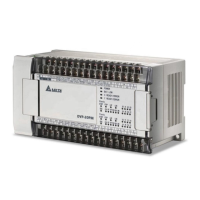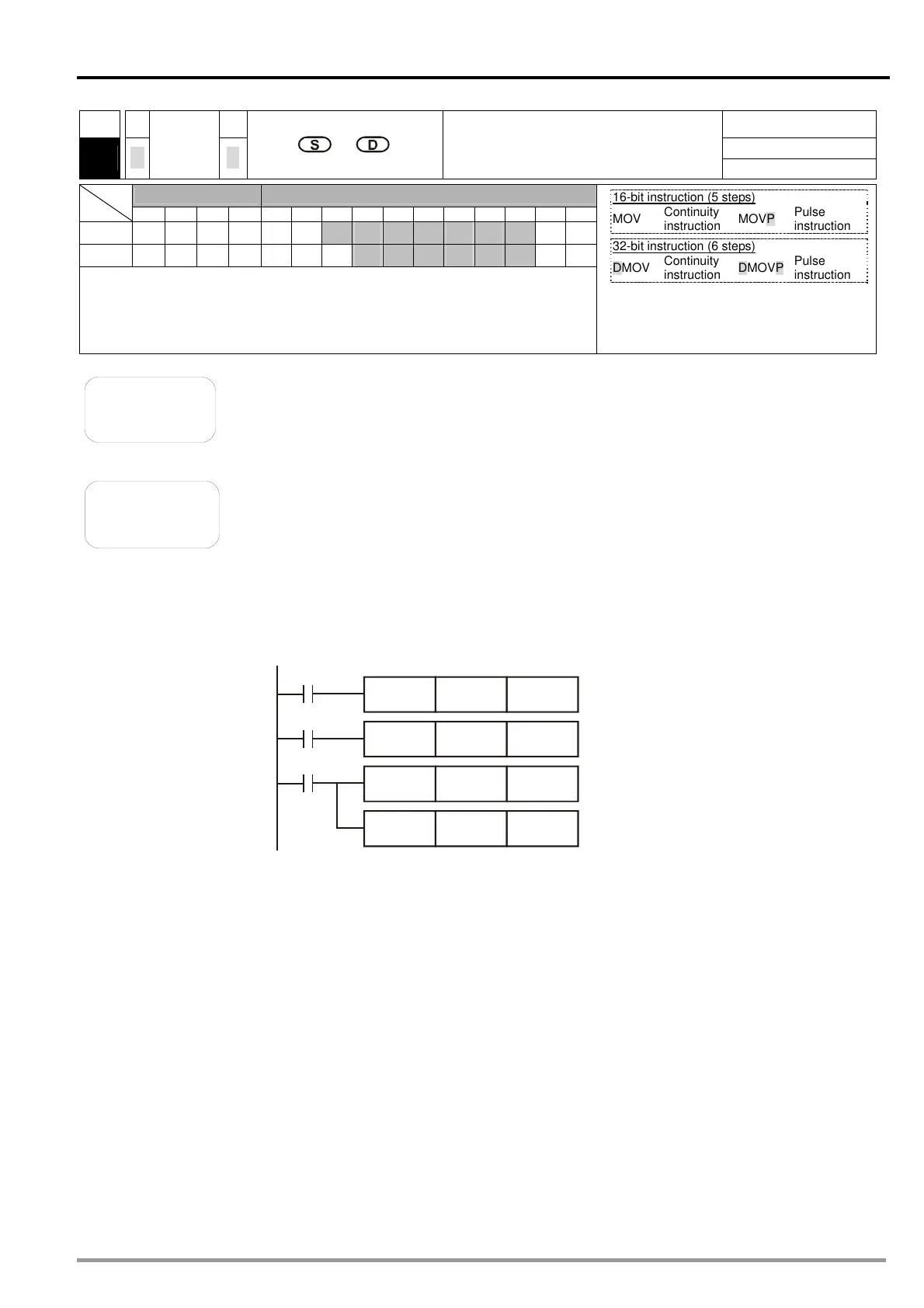5 Applied Instructions and Basic Usage
DVP-20PM Application Manual
5-25
API
Applicable model
20PM
12
D
D
MOV
P
P
Transferring a value
Bit device Word device
X Y M S K H KnX KnY KnM KnS T C D V Z
S
* *
* * * * * * * * *
D
* * * * * * * *
Note: The instruction supports V devices and Z devices. (If the 16-bit
instruction is used, Z devices can not be used. If the 32-bit
instruction is used, V devices can not be used.)
Please refer to specifications for more information about device
ranges.
16-bit instruction (5 steps)
MOV
Continuity
instruction
MOVP
Pulse
instruction
32-bit instruction (6 steps)
DMOV
Continuity
instruction
DMOVP
Pulse
instruction
Flag: None
Explanation
When the instruction
is executed, the value in S is transferred to D. When the
instruction is not executed, the value in D is unchanged.
S: Source; D: Destination
If an operation result gotten is a 32-bit value, users can only move the
operation result by means of the instruction DMOV.
Example
If users want to move a 16-bit value, they have to use the instruction MOV.
1. When X0 is OFF, the value in D0 is unchanged. When X0 is ON, the value
K10 is transferred to the data register D0.
2. When X1 is OFF, the value in D10 is unchanged. When X1 is ON, the
value in K2M4 is transferred to the data register D10.
If users want to move a 32-bit value, they have to use the instruction DMOV.
When X2 is OFF, the values in (D31, D30) and (D41, D40) are unchanged.
When X2 is ON, the value in (D21, D20) is transferred to (D31, D30), and the
value in (D51, D50) is transferred to (D41, D40).
X0
MOV K10 D0
X1
MOV
K2M4
D10
X2
DMOV D20
D30
DMOV
D50
D40

